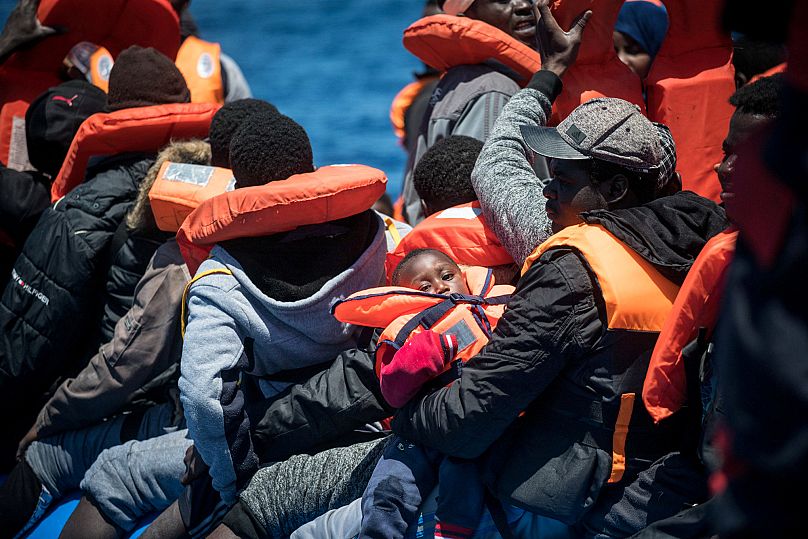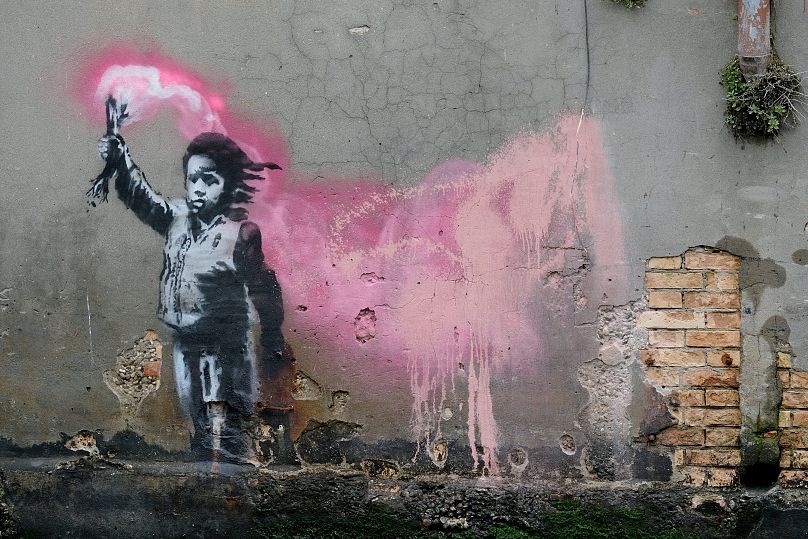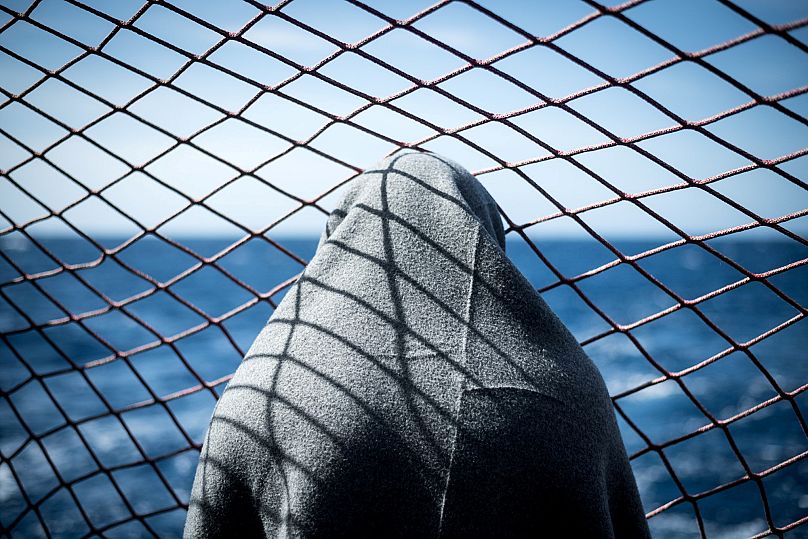Far-right Lega Nord leader Matteo Salvini promised to “fill planes and send immigrants home” but the number of repatriations as actually fallen.
Italy’s far-right League leader Matteo Salvini made headlines with his election campaign promises to “fill planes and send immigrants home” but it is no secret that the number of so-called repatriations hasn’t risen.
In fact, under his tenure as Interior Minister and Deputy Prime Minister of Italy, there has been a fall in removals of illegal non-EU citizens.
To repatriate somebody from Italy it is essential that:
a) the person does not enjoy international protection and has been correctly served with an expulsion order;
b) the country of origin recognises the person as a citizen;
c) valid bilateral agreements exist with the relevant country.
In Europe, one state is particularly "efficient" when it comes to carrying out expulsions of irregular immigrants: Switzerland.
According to Corriere del Ticino, in 2017 some "56.8% were sent home, against a rate of 36.6% for the European Union." What was the strategy followed by Switzerland, and why does it work better than the Italian one?
First of all, the numbers
In 2017, 7,147 people left the country by air under the supervision of the authorities according to the Swiss Secretariat for Migration. Data supplied by the agency to Euronews put the 2018 figure at 3,029. Given that there are estimated to be 76,000 irregular immigrants in the Swiss Federation, the percentage repatriated was 9.4% in 2017 and 3.9% in 2018.
By comparison, 6,398 people were repatriated in Italy in 2018, according to the National Guarantor of the Rights of Detained Persons, or 1.2% of the estimated total of 533,000. In 2017, under Salvini’s predecessor, Minniti, the figure was slightly higher, at 6,514. Analysis by Milena Gabanelli of Corriere Della Sera shows the numbers have fluctuated over the past decade but are broadly unchanged.
If we compare this with the decrease in Assisted Voluntary Repatriations (a more effective and less drastic method than forced repatriations), it is clear that Italy has some difficulty in implementing an effective strategy of repatriation of irregular immigrants.
The coalition deal between League and the Five Star Movement called for “clear and rapid repatriation procedures" of the "500,000 irregular migrants present today in our country".
It is a readmission agreement, not a repatriation
Readmission agreements are instruments that serve to facilitate the execution of an expulsion (not to be confused with the Dublin agreement, a multilateral system that serves to transfer asylum seekers between European states and to the state that has to evaluate the request for asylum).
The readmission agreement is used to expel a migrant who is not entitled to international protection or residence permit and, it has been decided, is irregularly present in the territory and does not come from countries where their safety is at risk. It is triggered once the identity and nationality of the immigrant has been ascertained and the necessary controls have been carried out by the authorities.
European law is the framework in which all EU states are obliged to operate and has been in force since 2010. It establishes how to carry out expulsions, on what basis and what rights must be protected. Switzerland, which is part of Schengen, must also follow the guidelines.
Readmission agreements are a matter of concurrence between the EU and European states. It means that there are both agreements at the continental level — signed between Brussels and 17 countries (the most important: Turkey, Pakistan and those with Balkan countries) — and bilateral agreements between EU states and non-EU states.
Each EU state can deepen the agreements in parallel if this is provided for in the framework agreement, but, in general, the EU agreement always prevails. For example, if Italy were to sign an official agreement with Pakistan, it must mirror the EU agreement.
Then there are the bilateral agreements between European countries, which regulate what happens if, for example, an African migrant, who has been granted international protection from Italy goes to Switzerland to look for work.
Readmission agreements cover mostly practical matters. (Morocco, for example, does not accept charter flights) or how to establish the nationality of an undocumented migrant if the country of origin refuses to recognise them as its citizen.
Without diplomacy, bilateral agreements are little use
Experts say bilateral deals are typically skewed in favour of Western nations rather than countries where most migrants come from.
It means the deals are a continuous work of diplomacy involving incentives and negotiations. Jean-Pierre Cassarino, a political scientist and one of the leading experts on the subject, says agreements “aim only to address the consequences of irregular migration, not their causes".
With repatriation higher up the agenda of European countries than their African counterparts, the success of bilateral deals relies on “a wide-ranging cooperation context,” he said.
Enrico di Pasquale, a researcher with the Leone Moressa Foundation, said countries “must effectively negotiate for every person who must be expelled.”
So why does Switzerland do better than Italy?
- Switzerland started earlier. The first readmission agreement signed by Switzerland dates from 1993 while, at the European level, the first was in 2000. Italy had only one bilateral deal in the 1990s, with Albania to tackle the specific problem of overcrowded boats arriving in Puglia from the former Communist regime.
- Switzerland has more bilateral treaties. There are 64 in Switzerland. In Italy, there are four official ones (Tunisia, Morocco, Egypt and Nigeria) and some unofficial deals struck by administrators or police and never ratified or discussed in parliament.
- Switzerland does not offer any quotas for legal immigration. Instead, it tends to offer infrastructure financing as an incentive to thwart immigration. For example, it has invested heavily in public projects Balkan countries, in vocational training in Cameroon, and in border management in Lebanon.
- Fast identification. According to the Swiss immigration agency, the country is able to process 60% of asylum requests within 140 days, compared to the typical period of years in Italy. In 2018, asylum procedures were completed in an average of 562 days. The speed is a deterrent factor for migrants hoping for bureaucratic delays in order to delay their return home, according to InfoMigrants.
- Advice and help on return. Until the early 1990s, the federal government supported regional return advice offices in all cantons. "The basic return aid offer has been transformed from a mere cash payment into an effective use of resources through project aid", the immigration agency says.
Not everything is smooth even on the Swiss side of the Alps. Osar, the Swiss aid organisation for refugees, is sharply critical of Geneva’s agreement with Ethiopia which involves collaboration with the Ethiopian secret services and offers no guarantees on human rights.
Disorder and lack of transparency in Italy
Francesco Negozio, from La Sapienza University in Rome, writes that Italy’s system “appears extremely messy” and readmission deals are often legally ambiguous.
Italy was rebuked by the European Union in 2014 for failing to comply with the repatriation directive 115/2008 and for not having adopted a system of control and monitoring of repatriation flights. Since early 2016, the office of the National Ombudsman for the Rights of Persons Detained or Deprived of Personal Freedom monitors repatriation flights to ensure compliance. Its chief, Mauro Palma, says police agreements, such as the one signed with the Gambia, "should lead to an agreement ratified by parliament or be ended”.
He also explained that repatriating 10 people requires 20 police officers, and repatriating 6,000 would need 12,000.
"The costs are partially covered by Frontex, to which, Italy contributes in turn,” he said. “The repatriation system, therefore, has its own physical limitations, which is those who pledge repatriations with multi-zero figures know they are making an impossible promise.”
Palma says Italy is trying to build "a Mediterranean network that guarantees to follow the repatriated person even he gets off the plane. Too often, they are met by local police and nothing more is known about them".
Salvini’s predecessor, Minniti, operated an informal dialogue with Libya because it was impossible to engage legally with a country torn apart by civil war. Since his departure, such diplomatic dialogue has stopped.














